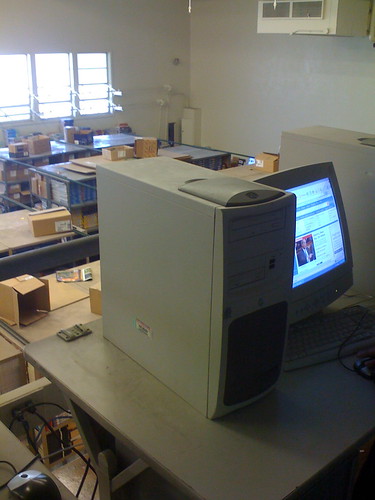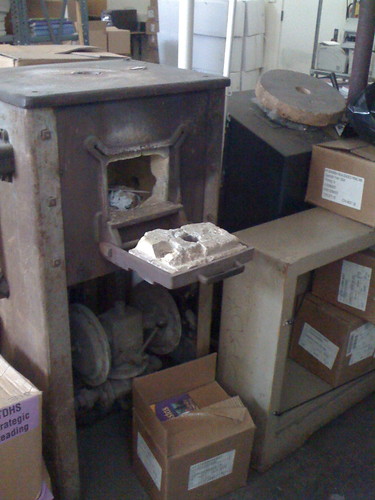
I’ve been in serious Beatles mode lately. You can chalk it up to the full court press marketing effort behind the recent remasters and Rock Band if you’d like. In any case, as I have been re-listening through the discography, I’ve been drawn to some of the songwriting refrains that pop up now and then. Most explicitly, I’m excited by the way that I think the Beatles represent aspects of Critical Pedagogy within their catalogue.
I am pleased by the dialectical nature of many of the later Beatles songs. Though I don’t claim to be an expert on their songwriting practices, looking at the writing credits as well as post-Beatles albums, I’d attribute most of this trend to John Lennon. [While I’ll generally appreciate the patient, spiritual acceptance of circumstance that plods throughout George Harrison’s All Things Must Pass, I think that Lennon comes across as the more needed voice apropos critical pedagogy.]
The dialectic at the heart of many Beatles songs is one that finds discussion of differing viewpoints and a synthesis toward understanding and consensus. It is a deliberative process, if still imbued into the structure of a standard three-minute pop song.
Let’s look at “With a Little Help From My Friends” as an example:
Would you believe in a love at first sight?
Yes I’m certain that it happens all the time.
What do you see when you turn out the light?
I can’t tell you, but I know it’s mine.
Oh, I get by with a little help from my friends,
Mmm I get high with a little help from my friends,
Oh, I’m gonna try with a little help from my friends
That the song’s verse becomes a literal exchange between two voices demonstrates how dialogue helps move ideological bodies toward common visions, goals, understandings. It offers a problem-posing model of inquiry aligned with revolutionary pedagogical practice.
Similarly, “Hello Goodbye” finds the dialectic between opposing voices. The song is a one-sided take at the vexing process that often yields consensus. Talking with my advisor about the difficulties in determining content within my classroom, it’s clear that the dialectic between the “social justice” content and the necessary, “traditional” content is what’s at stake. A dialogue between these two, typically polarizing areas is the place for student exploration – the distance between the misunderstood “Goodbye” and the whimsical, portentous “Hello” is one that reflects this tension. Listen for the contradictory background vocals running throughout the second half of this song (“I say yes, but I may mean no” & “I can stay ‘til it’s time to go” as examples).
And again, while praise for the Beatles is not exactly in short supply – and yes there are those contrarians that downplay the influence of the Beatles or even claim that the Animals are their more preferred group (?!) – I think what I’m presently finding most interesting about the group is the way they embrace tension and conflict within songs. As I type, “Penny Lane” is playing in the background (I threw on The Magical Mystery Tour solely based on my ever-evolving fascination with “Your Mother Should Know”). What would have been a typical, plodding – and still highly successful – pop song is elevated by the inclusion of baroque instrumentation –a motif the Beatles would regularly revisit. The syrupy vocals of “Penny Lane” are thrown into discord by the unexpected French Horn. And then, later in the album, you hear the way the dialectic extends across time: “All You Need if Love” finds the Beatles reframing “She Loves You” and even Glenn Miller’s “In the Mood” into a more contemporary vision of “love.” Likewise, “Glass Onion” on the White album revisits Lucy, the Walrus, and perpetuates the Paul is Dead hype.
I realize there are tomes and dissertations and academic gobbledygook that intellectualizes what the Beatles have done. And while most of this post may be cast-off as yet another example of academic navel gazing, I’m sincere in my efforts to point toward the pedagogical suggestions that Lennon and company are making; the revolutionary potential of the dialectic is one that can’t be downplayed here.
To conclude, I want to compare two statements. In “The Word,” the Beatles harmonize while singing, “Say the word and you’ll be free.” Similarly, Paulo Freire, in so many words explained that to name the word is to name the world. A literal change is made manifest through the power of literacy and the power of dialogue. I think it’s a vision shared by the Beatles and Freire and it’s a vision that we can share, together, as educators.










![A completed puzzle [sheets taped sideways are not the result of improper teaching!]](http://farm4.static.flickr.com/3372/3488823345_6483a8cba3.jpg?v=0)
